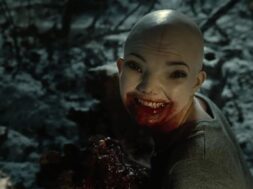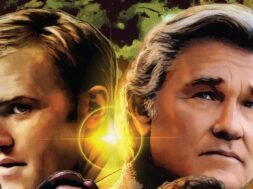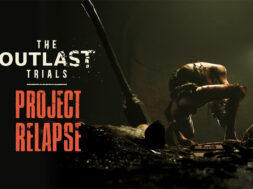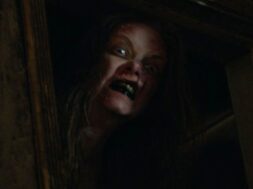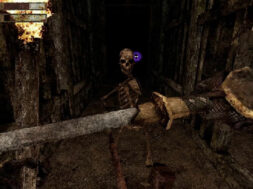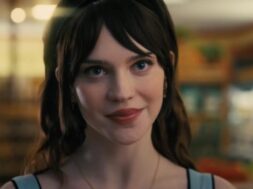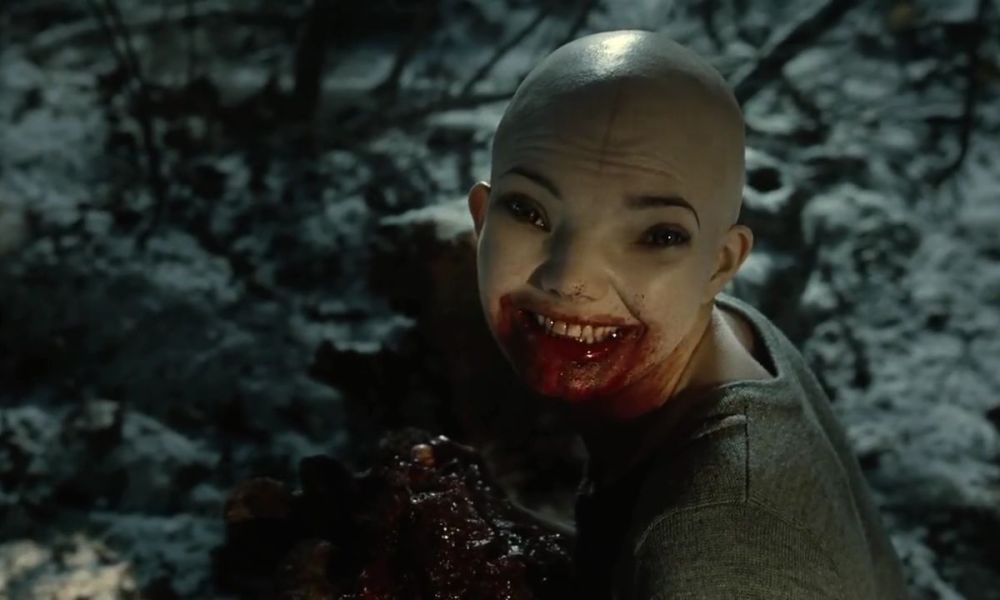
“Darkness Falls wasn’t much different from any old-fashioned town on the Atlantic Ocean from Nantucket to Key West. Except for one thing.”
That one thing, of course, is Matilda Dixon, better known as the Tooth Fairy. Most horror fans likely recognize this in-your-mouth ghost from her 2003 big-screen vehicle, but what they might not realize is, the movie Darkness Falls was accompanied by a novelization. The first of two media tie-ins — the other being a single-issue comic from Dark Horse — was published by PocketBooks shortly before the movie was released in theaters. And, like in many cases, much of what ended up on the cutting room floor can be found in the novelization.
While novelizations tend to be different from their cinematic counterparts, Keith R. A. DeCandido’s literary adaptation of Darkness Falls stays largely true to the movie. In fact, this book uses a more intact version of James Vanderbilt and John Fasano’s original screenplay, which was based on Joe Harris’ story and short film Tooth Fairy. Director Jonathan Liebesman and those others behind the camera of Darkness Falls made the right call about certain changes. However, the over-editing also had its drawbacks, including the unfortunate downsizing of the movie’s antagonist.
Author DeCandido had the luxury of expanding on events that led to Darkness Falls’ curse. Meanwhile, the movie condenses Dixon’s origin into a two-minute prologue doubling as an exposition dump. As one might guess, this reduction in Dixon’s life story entailed changes both big and small. According to the movie’s visual preface, Dixon was an older woman with no husband to speak of, whereas the novelization depicts her as a younger widow shortly before her death. Several years before her public execution in 1841 — after her being wrongly accused of murdering two children — Matilda’s husband, Sonny, died in a fishing accident. His passing, needless to say, had a profound effect on a woman whose sole wish was to have children of her own.

Image: Emma Caulfield and Lee Cormie’s characters, respectively Caitlin and Michael, fear the Tooth Fairy.
Matilda lost a lot more than just a husband in the novelization. With Sonny’s passing, Matilda essentially lost her chance at motherhood; Captain Dixon clearly was not ready to have a family prior to his death, seeing as he wanted “just a few more trips at sea” before settling down. So, motherless and widowed, Matilda did the next best thing in Sonny’s absence: she coveted other people’s kids. Her envy, while indeed odd, was nothing harmful. In exchange for one’s last baby tooth, Matilda offered a homemade treat — gold coins in the movie — to anyone willing to travel to her home by the local lighthouse. Sadly, the townsfolk of Darkness Falls took this gesture in bad faith and acted on their preexisting prejudice toward the Dixon widow.
After reading the novelization, the suggestion that Darkness Falls is a supernatural twist on the psycho-biddy (or hagsploitation) subgenre is not so baseless. Matilda Dixon does not fulfill the precise criteria for an average psycho-biddy; she better meets the age requirement in the movie, yet it is the novelization that establishes her as a beautiful woman whose mental health steadily declined as she grew older, lonelier and more ostracized. The important catalyst of waning glamor is lacking in Darkness Falls, only because Matilda’s deteriorated sense of self and postmortem rampage are not tied to her appearance. And after being treated as such in life, the Tooth Fairy became a real monster in death.
Matilda is not the only character in Darkness Falls whose backstory was diminished in the movie’s final cut. In the novelization, the inevitable hero, Kyle Walsh, starts out as a troubled preteen who does little to endear himself to readers. This thornier take on young Kyle mocks his peers’ class presentations — perhaps deservedly so because every kid was churning out the same whitewashed report on Darkness Falls and the Tooth Fairy legend — before stabbing his bully in the back with a protractor. The movie went in a different direction than expected during rewrites and reshoots, so there was no longer a need to establish Kyle as an antisocial youth.

Image: The Tooth Fairy.
In what became the movie’s remarkably effective opener — and, overall, its best set-piece — DeCandido is initially vague about who really killed Kyle’s mother in the novelization. This is on account of earlier plans to conceal the existence of the Tooth Fairy until later on, and having the audience believe Kyle (played by the late Chaney Kley) was killing everyone. As hard as it is to imagine Darkness Falls as anything but a barefaced movie about a vengeful phantom, this rug-pull would not have felt out of place. In that current horror climate, ridiculous plot twists were not unusual. Having Kyle be the red herring, only to then reveal a ghost was the culprit all along, however, might not have gone over too well with viewers somehow anticipating an entirely different kind of movie. Nevertheless, the regrettable lack of suspense could be attributed to this change in game plan.
Liebesman shot Darkness Falls “without a firmly set design for the Tooth Fairy in place.” The movie’s spectral villain experienced several makeovers over the course of production before eventually settling on Stan Winston Studio’s proposal. The final look of Matilda, one resembling a woman with severe burns all over her body, is unlike the previous design that was immortalized by McFarlane Toys. The novelization’s portrayal of the Tooth Fairy is closer in line with the Winston model, although the writing submits Matilda’s image as more grotesque and putrid. DeCandido wrote of Matilda’s traumatized visage: “There were burns all over her face, half her lips weren’t even there anymore, her nose was withered, and her forehead was a crackling mass of red flesh.” While Matilda’s unmasked movie mug is not quite as ghastly-looking as the novelization’s description, the unveiling during the last act is not only a horrific sight to behold, it is a testament to practical effects in horror.
Darkness Falls is not fondly remembered, even as horror audiences look back more kindly at the genre’s erratic yet experimental 2000s period. And the chances of this movie receiving an outpouring of positive reappraisal seems unlikely. All the initial criticisms remain spot on: the undercooked script, the paper-thin characters, and a shortage of scares. Pushing past that, however, there is still the chance for some meager fun in this insubstantial but attractive ghost story.
Foolish studio meddling ultimately ruined Darkness Falls’ chances to be as thoroughly creepy as its opening sequence. Surely seeing too much of the Tooth Fairy on screen made her less intimidating. Maybe even goofy. The novelization’s prequel parts, on the other hand, give Matilda more weight as a sympathetic villain. Anyone who thought she was squandered in a mediocre movie is encouraged to seek out the novelization. If not that, at least the standalone comic that details the same tragic history of Matilda Dixon.

Image: The cover of the Darkness Falls novelization.
